What’s Transactional Messaging?
Published on January 30, 2025/Last edited on January 30, 2025/14 min read
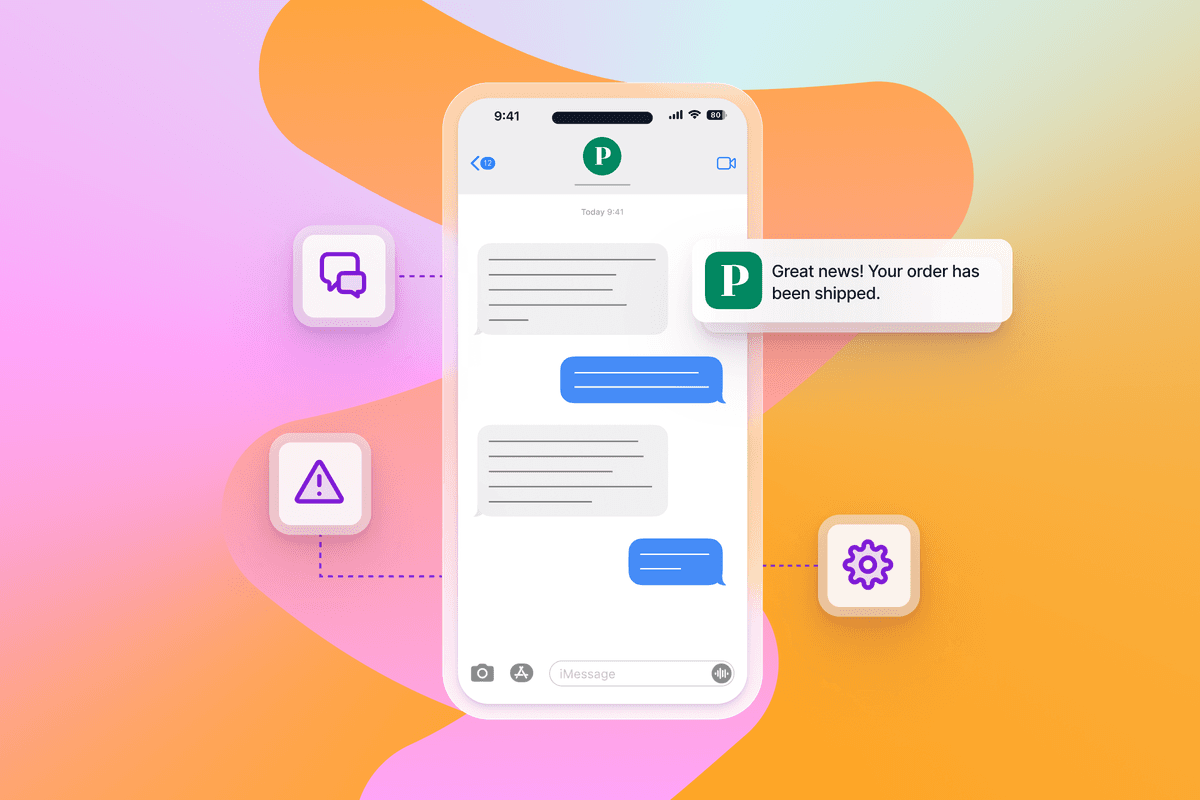

Team Braze
Transactional messages are arguably one of the most important types of messages brands send customers and are among the campaigns that generate some of the highest engagement rates.
Everybody’s familiar with the experience of getting an email or push notification that they weren’t expecting—and, frankly, they may not want—from brands. But while a great deal of outreach falls into this category, there’s a key type of messaging that recipients not only expect, they actually need and want to receive. Think password reset emails, delivery confirmations, fraud alerts, and all the little communications that grease the wheels of modern life—AKA transactional messages. These have become such an essential part of the modern customer journey that in many situations, failing to send these messages can create a problem and a bad consumer experience.
In this guide to all things transactional messaging we’ll dig even deeper into the definition of what transactional messaging is and how it’s different than typical promotional marketing campaigns, share examples of transactional messages, list the top channels transactional messages are typically sent on, explain how brands can use transactional messaging to support stronger customer engagement, and answer all of your most pressing questions about transactional messaging.
What Is Transactional Messaging?
As the name suggests, transactional messaging is a type of messaging that’s centered around customer transactions. These messages are sent in response to customer activity and are personalized to the individual. Here’s a rundown of the key components of transactional messaging.
1. They’re messages that are related to customer transactions
Transactional messages are triggered campaigns that are automatically sent after a customer takes a given action, such as purchasing from a retailer, placing an order from a restaurant or delivery app, depositing a mobile check, signing an online petition, contributing to an online fundraiser, RSVPing for an event, or requesting a ride from a rideshare app.
2. They contain confirmation information or high-priority details related to a transaction
These messages typically confirm that the action has been taken and contain high-priority information related to the activity, such as a receipt for a transaction, tracking for a package that’s been shipped or an order that’s been placed, or details about an upcoming reservation or appointment.
3. They’re triggered, automated, personalized messages that are sent in real time in response to individual user activity
Because they’re triggered by an individual's unique actions, they’re personalized on an individual basis, as opposed to being part of a more general campaign that might be sent to a larger list of recipients.
4. …but they’re not just financial transactions
Transactional messages from your brand could be limited to major monetary actions, like making a purchase or becoming a paying subscriber, but you could also build campaigns around other actions, like joining a group or marking something as favorite.
Your company’s actual definition of what is and isn’t transactional will vary by industry and will depend on how customers interact with your brand. You should also keep in mind that in some jurisdictions, privacy and anti-spam laws define what type of messages are considered transactional/customer service or marketing/commercial. Because the type of the message determines the legal requirements that you will need to comply with (such as consents or opt-ins), you should seek legal advice to ensure that the transactional campaigns you plan to send are also considered transactional from a legal standpoint.
5. They should streamline and enhance the customer experience
Every transaction is an opportunity to continue your brand’s relationship with a user and to provide value directly tied to your company’s main purpose in your users’ lives. Just because the message is just transactional doesn’t mean it isn’t an opportunity for continued customer engagement!
Transactional Messaging vs. Promotional Messaging
Transactional messages relate to actions customers have already taken, while promotional messages are designed to encourage customers to take further actions. A major advantage of transactional messages is that they are more likely to be engaged with than promotional ones. That’s because campaigns related to transactions are more likely to be seen as adding value to customers’ lives and less likely to seem intrusive.
Promotional or marketing messaging can include newsletters, discounts and sales, new product promotions, triggered promotions like abandoned cart or back-in-stock, company-related news, or anything that’s supporting a larger brand campaign. These messages are also often sent to larger groups of users—whether in batch-and-blast campaigns or highly segmented sends.
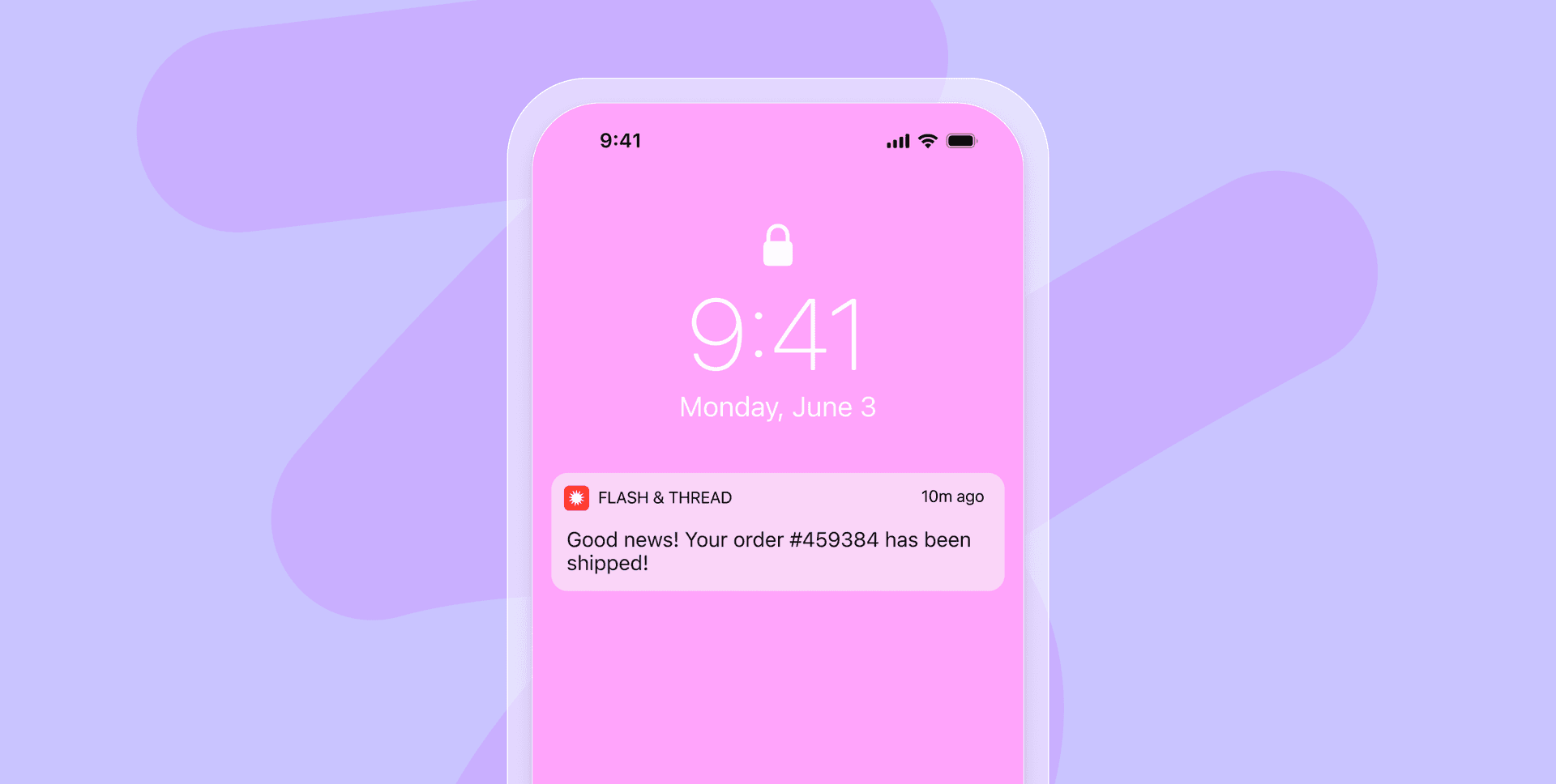
For many organizations, transactional and promotional outreach exist in separate, distinct worlds — sometimes they’re even sent from different marketing automation platforms. Why? Logistics and customer support teams, which may be responsible for transactional messaging, have different needs than marketers. Transactional campaigns, by design, often stay brief and focused—to keep customers updated on their orders and provide a channel to ask questions. Promotional messaging, on the other hand, needs to be emotional, attention-grabbing, and influential enough to sway a purchase decision.
Savvy marketers, however, know the importance of leveraging transactional messaging to motivate users to deepen their engagement. From a marketing real estate perspective, transactional messages can give companies the opportunity to strengthen connections with existing customers and encourage repeat purchases.
Examples of Transactional Messaging
Depending on the context, common transactional notifications include:
- Two-factor authentication messages
- Financial transaction updates
- Event registration, appointment booking, and travel and accommodations confirmation messages
- Security check and password reset messages
- Shipping and delivery updates
- Order status updates
- Purchase confirmation and status messages
And that’s only the beginning. If a customer can take a relevant action on an app or website, there’s like a relevant transactional message that could be sent.
What Channels Are Transactional Messages Sent On?
In theory, you can send transactional communication on any channel. That said, attention-grabbing channels like email, SMS, or push notifications tend to be the most common, because they can reach recipients even if they’re not currently active on your app or website; for these kind of messages, it’s usually best not to depend on a channel like in-app or in-browser messages where some of your users might not see the outreach for hours or even days.
Transactional push notifications
Push notifications are great for time-sensitive transactional messaging, like “your food is ready” or “your car share has arrived,” since they’re alerting users to the status of an order or transaction that they recently placed in your app and are likely waiting to hear about. The notification will cause their phone to buzz or light up, alerting them to the update immediately.
Depending on your business model and audience, push notifications can be a great option. But keep in mind that these kinds of activity notifications would likely seem out of place, or even overwhelming, in something like a shopping app.
There is potential for overuse, especially if you use push for promotion or re-engagement campaigns as well, so it’s important to be selective about what transactions trigger a push and to consider frequency capping. If you can remind users of the value of their transaction, it’ll help to keep your brand top of mind, and a push is worth sending.
- When crafting the message, the space is limited, so keep it to fewer than 24 characters.
- Because only 51% of iOS users and 81% of Android users opt into push notifications on average, you might not be able to reach some users through this channel at all. Be sure to prime for push by showing customers the value of your notifications before asking for push permission, and plan for other channels to reach opted out people with must-have info. (We’ll go into some of these options ahead.)
- Coordinate with your other channels to develop a cadence so that users come to expect your messages to accompany their transactions.
- It's also important to ask users what types of push notifications they want to subscribe to. Some users may only want to subscribe to transactional push updates, so give users an opportunity to do so, e.g. in an in-app preference center.
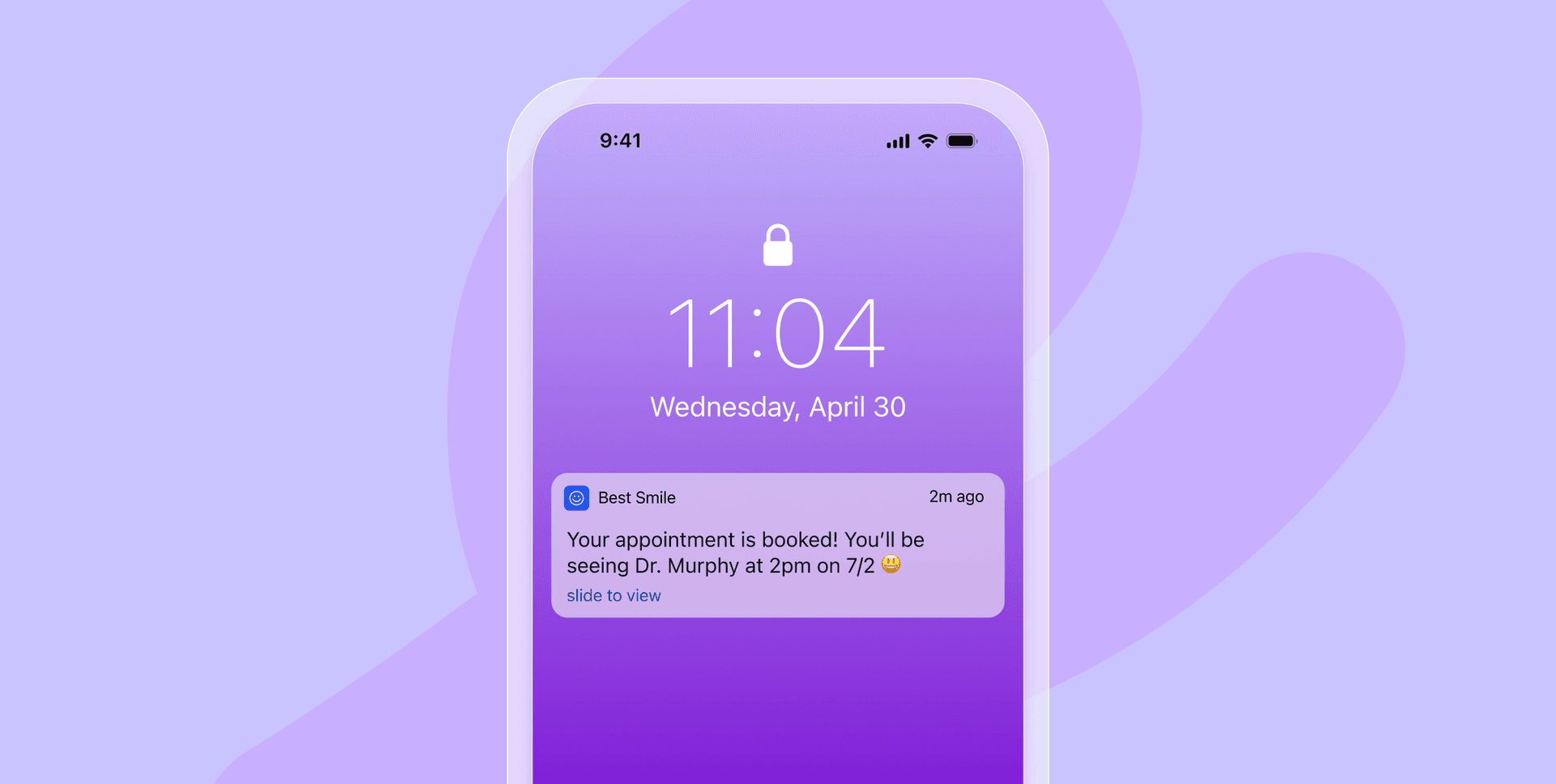
Transactional emails
Compared to short-and-sweet push messages, emails offer more real estate, allowing for more personalization, ability to feature more offers, and long-form content with rich images to highlight the value of the transaction. They’re also more permanent than push notifications, meaning users can refer to them later if they’d like.
- Emails may take more time to craft, but they can highlight and provide access to other products or features.
- Emails are a better choice than push or SMS for more official transactions, like receipts, notifications of account changes, and shipping confirmations.
- Emails are used for two-step verification for secure transactions.
- Emails are the best channel for image-rich content. A purchase receipt, for example, could even come formatted on an image of a receipt, to instantly convey its importance and meaning.
- Emails stay in the user’s inbox until they delete them, meaning they can keep a permanent record of a transaction, and even sort it into their email folders for safekeeping.
- Email can combine well with other more immediate channels, like push and SMS, because there’s likely to be a lag between viewing on each channel. A banking app, for example, might have an in-app message to confirm a transaction, and later the same day, send an email re-confirming the transaction and showing further details.
- Emails can allow for a more personal touch since they can come from specific individuals within your company.
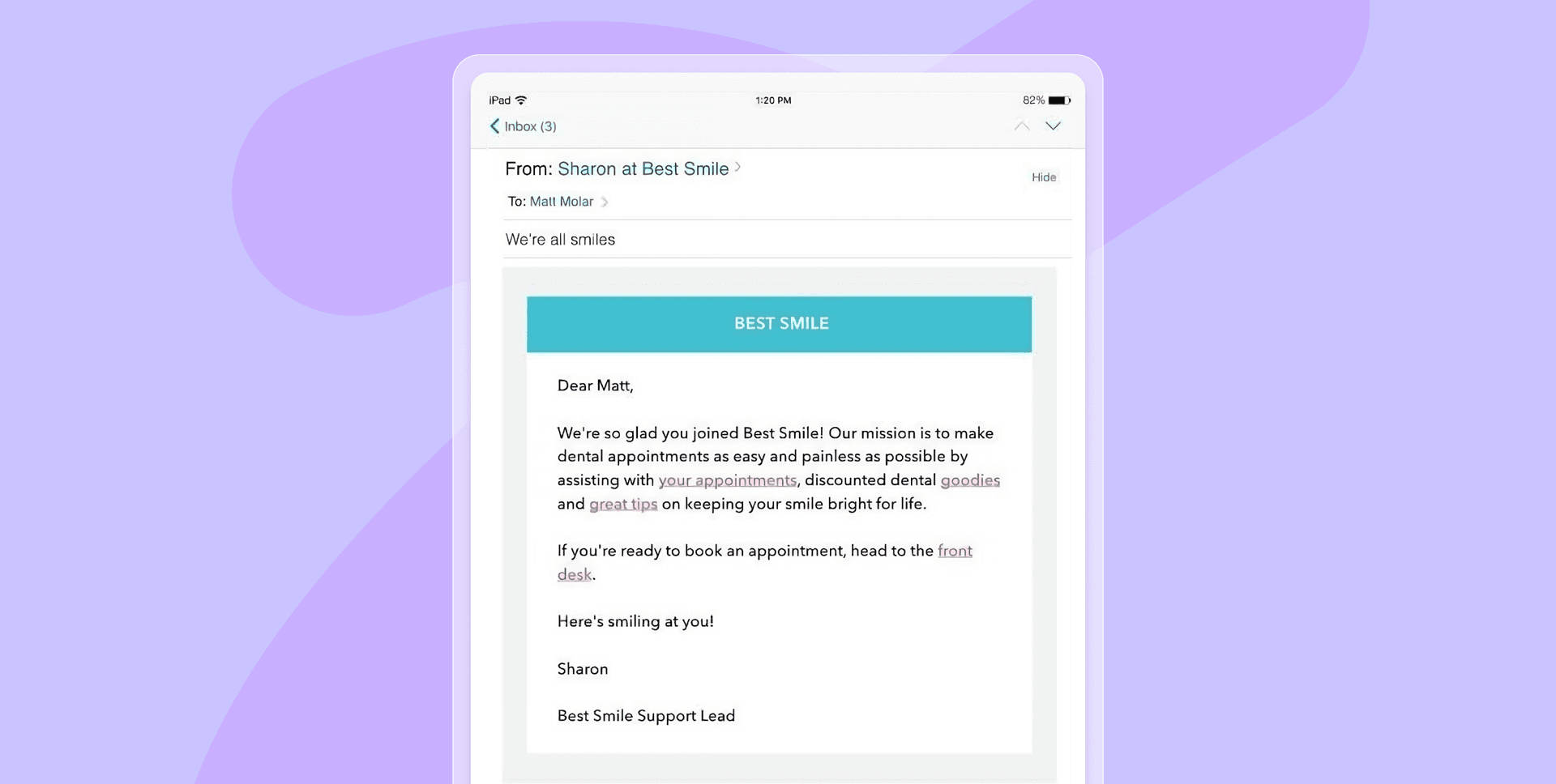
Transactional SMS
The all powerful text message: the original mobile communication channel. Transactional SMS messages, or transactional text messages, stand out in a powerful way and will catch user attention, but you’ll want to use them sparingly to avoid seeming intrusive. Transactional text messages are used heavily for two-step verification for secure transactions and for communicating critical information. These may be even better than a push notification for something as important as a bank telling you about potential fraud or a delivery company telling you about a package arrival. After all, research shows that 90% of text messages are read within 3 minutes.
- Encouraging users to opt in is crucial for transactional text messages since you need explicit opt-ins before you can send text messages to users.
Like push notifications, transactional SMS messages are better for shorter messages, with a maximum of 160 character limit.
- With SMS, you can add a shortened link to direct users to your app or website if you need to provide more information about the transaction or encourage them to keep engaging with your brand in a different way. To improve customer trust, especially for industries like health and banking, consider using a custom domain that reflects your brand’s identity to make sure customers know it’s really you.
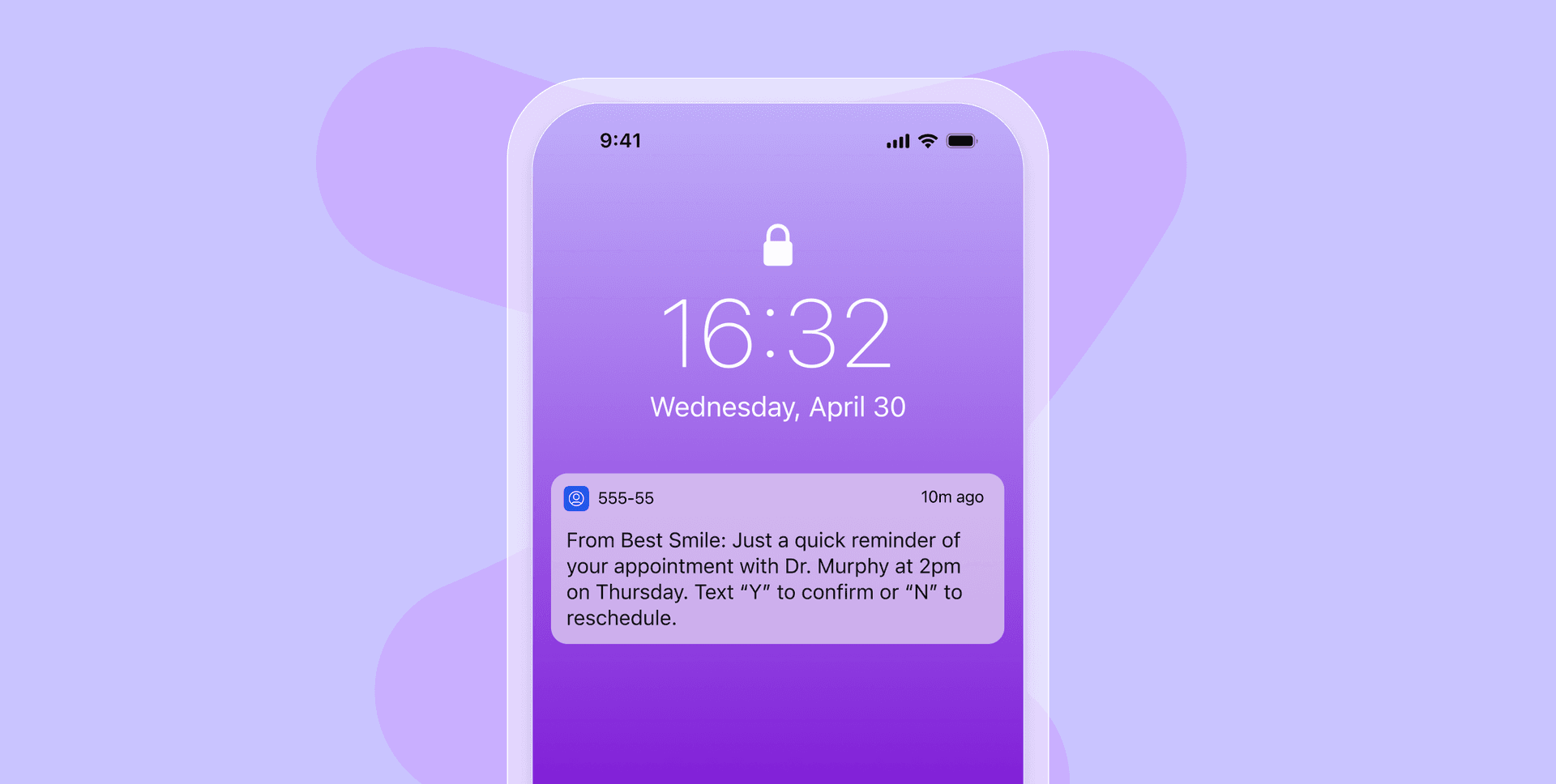
These channels will pair well with…
So you’ve mapped out your transactional campaigns across emails, push notifications, and transactional text messages. What can you add to complement and further the value to your customer?
Both in-app messages or in-browser messages pair well with emails if they pop up immediately following the transaction and indicate that an email will be sent. There’s some design flexibility in the message style, as you could use a full-screen, modal, or slider within the app for different message lengths and possible image inclusion.
Content Cards are a great place to feature recent accomplishments and transactions. This channel is also great for encouraging new users to complete onboarding, as part of a welcome or sign-up transaction campaign. Like emails, they’ll be re-accessible down the line, although they’re not as easy to reference as far down the line as an email.
There is no one perfect answer that works for all companies when it comes to picking channels for a transactional campaign, but in general, your shorter and more urgent transactional messages should go through SMS or push and your longer content with more details should go through email. Pairing channels can work well as long as you’re intentional and don’t overdo it with too many messages.
How Can Transactional Messages Support Customer Engagement?
Transactional messages can be a powerful way for brands to build confidence and loyalty among their customers by consistently serving up the information that they depend on. To make sure you’re making the most out of the transactional notifications to support your customer engagement strategy, keep these guidelines in mind.
1. DO: Make sure you have the appropriate information in each message
The whole point of a transactional message is that it’s giving customer info that they need, when they need it. When you follow an online purchase with a receipt that includes tracking and delivery information, you’re giving them peace of mind that (a) their purchase actually went through and (b) it’s heading their way shortly. That’s meaningful, and can do a lot to bolster the relationship you’re building with them. The same principle applies to password reset messages (e.g. make sure they have clearly linked details and instructions), welcome communications, and any other kind of transactional outreach.
2. DO: Send messages aligned with your brand and tone
Want to put your best foot forward? Use the transactional messages you send as opportunities to win over your audience. Take the time to ensure that subject lines and notification copy is snappy yet descriptive. Personalization is just as essential here as it is with marketing messages, so make sure you’re including the customer’s name and other specific information that can be dynamically inserted into the transactional messages you send (for instance, order numbers, delivery timelines, and more).
3. DON’T: Forget to treat your transactional messages like you would any other lifecycle campaign
For many companies, transactional messages go out all day, every day and are great for interacting with and engaging your customers. But there’s also room for error. At a minimum, you’ll want to ensure that you can do the following:
- Personalize messages to your customers based on past purchase behaviors or shopping preferences
- Track performance of messages through attribution models that you create
- Run segment-specific A/B tests
- Reach buyers at their specific stage of the customer lifecycle (check out our customer lifecycle marketing guide for tips on how to do this)
- Use a marketing automation system to trigger campaigns based on actions that your users are taking
Similar to how you would plan a promotional lifecycle campaign strategy and calendar, you should map out what your transactional campaigns are, how they'll interact with one another, and your plan for monitoring their performance over time. You can run A/B tests on your messaging to optimize your results as well.
The bottom line
While they have a limited, specific purpose, transactional messages can make up an important part of your overall messaging strategy. Customers are looking to you to clearly provide this pertinent information the moment they need it. Failing to do so can irreparably harm their relationship with your brand.
Forward Looking Statements
This blog post contains “forward-looking statements” within the meaning of the “safe harbor” provisions of the Private Securities Litigation Reform Act of 1995, including but not limited to, statements regarding the performance of and expected benefits from Braze and its products. These forward-looking statements are based on the current assumptions, expectations and beliefs of Braze, and are subject to substantial risks, uncertainties and changes in circumstances that may cause actual results, performance or achievements to be materially different from any future results, performance or achievements expressed or implied by the forward-looking statements. Further information on potential factors that could affect Braze results are included in the Braze Quarterly Report on Form 10-Q for the fiscal quarter ended October 31, 2024, filed with the U.S. Securities and Exchange Commission on December 10, 2024, and the other public filings of Braze with the U.S. Securities and Exchange Commission. The forward-looking statements included in this blog post represent the views of Braze only as of the date of this blog post, and Braze assumes no obligation, and does not intend to update these forward-looking statements, except as required by law.
Even More About Transactional Messaging—Answers to Your FAQs
Retail, eCommerce, restaurant and delivery, and financial services brands may be the kinds of companies that first come to mind when you first think of transactional messaging, but any brand that has some kind of customer transaction—monetary or otherwise—benefits from this type of messaging, whether that’s by sending a confirmation that a library book has been checked out or that a flight or hotel reservation has been booked.
Transactional messages can help brands get ahead of customer service inquiries and issues and help improve customer satisfaction by providing the information customers need to seamlessly and successfully complete customer journeys right when they need it.
In the Braze guide Retention by Design: Your Anti-Churn Playbook, we share that some of the most effective customer retention strategies include successfully onboarding new customers, demonstrating brand value, and personalizing campaigns, all of which can be reinforced through transactional messages.
As mentioned earlier, transactional messages are by nature personalized outreach that relate specifically to a given individual’s behaviors or actions.
Here are some common issues that occur with transactional messaging that can have an impact on the customer experience and make these campaigns less than effective.
- When brands take a siloed approach to transactional and promotional messages, with teams not working collaboratively to ensure alignment and that a uniform brand voice is used across all customer-facing messaging. Brands should aim to use a customer engagement platform that can orchestrate their transactional and promotional messaging together.
- When companies fail to send transactional messages in real time using stream processing, leading to a potentially negative customer experience when customers don’t receive necessary updates in time or end up getting out-of-date information. Make sure your tech stack is in order so your customers get messages when they need them.
- When transactional messages become promotional and the key information customers need get lost among special offers, product recommendations, upsells, or other marketing messages. Understand what your customer is expecting from a transactional message and give it to them.
Financial services marketing compliance requirements are a major consideration as it relates to communicating with customers. These companies must ensure that they send the right messages that contain the right content and do not include any information that’s required to be kept confidential. By using a platform like Braze for transactional messaging, which is backed by real-time data processing instead of dated batch static processing, financial institutions can reduce the risks of potentially sending campaigns based on information that could no longer be accurate.
In many jurisdictions, transactional messages are subject to less strict legal requirements, and they often do not require explicit opt-ins or consent. However, these laws often contain narrow definitions of what a transactional/service message is. To remain complaint, marketers should be sure to send transactional campaigns that are truly service-related in accordance with applicable laws without blurring the lines into marketing promotions . You should discuss your transactional campaigns with your legal advisors to understand what are the legal requirements applicable to your use case.
To dig into more situations and good practices, check out our guidelines on sending legally mandated emails.
Yes, at its core, a transactional message is an automated message that’s triggered by an action a given consumer takes. The most commonly used channels for transactional messages include email, SMS, and push notifications because these are out-of-product messaging channels that brands can leverage to reach users even when they’re not currently engaging with a company’s app or website.
Braze has been designed to support global brands of all sizes to create and deploy campaigns of all sizes, from everyday marketing outreach to major promotions. In 2023 alone, we delivered over 2.6 trillion messages and other actions to over 6 billion monthly active users worldwide (as of January 31, 2024). Companies spanning six of the seven continents use the Braze customer engagement platform to reach customers who speak an immense tapestry of languages.
Online design platform Canva, which communicates with many millions of users worldwide in their preferred language and featuring localized content, is able to do so using Braze.
Some of our tools for enabling best-in-class global customer engagement include:
- Multi-language composition: This simplifies workflows for delivering personalized, culturally relevant messages across diverse regions at scale.
- Location-based marketing features: These allow brands to harness data related to each customer’s location and real-world movements to enable more relevant, more responsive, and more valuable outreach and experiences, tailored to the individual.
- Language-based personalization features: Marketers can use these to easily provide language-correct messaging experiences to a global audience, at scale.
Learn more about how Braze has embraced internationalization here.
Brands can balance urgency and brand tone with transactional messaging by sending shorter and more urgent transactional messages through more timely, immediate channels like SMS and push, and by delivering longer content with more through channels like email. By ensuring the teams responsible for transactional and promotional messages work collaboratively, brands can present a uniform brand tone and voice across touchpoints.
Related Tags
Be Absolutely Engaging.™
Sign up for regular updates from Braze.
Related Content
View the Blog
How behavioral marketing turns data into personalized experiences

Team Braze

Experience optimization: Turning data insights into better journeys

Team Braze

December 2025 Bonfire Marketer of the Month: Jagex’s Emma Oliver
